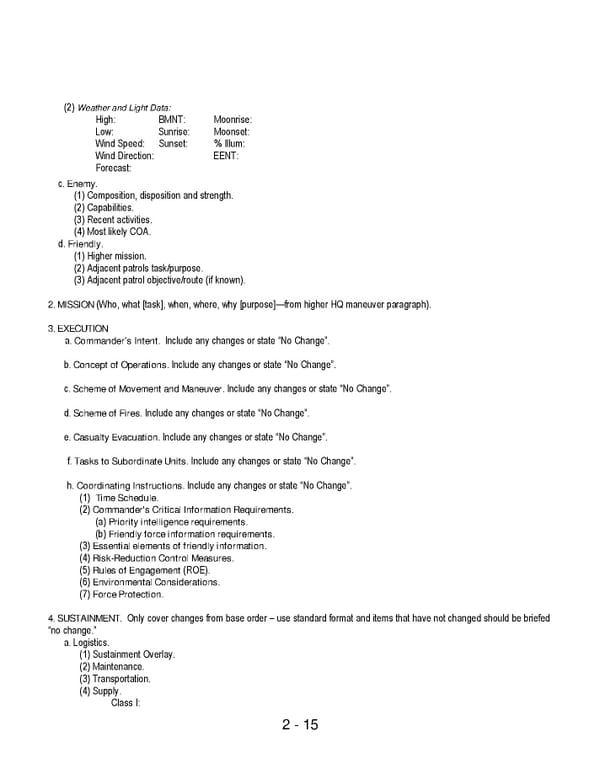2 - 15 (2) Weather and Light Data: High: BMNT: Moonrise: Low: Sunrise: Moonset: Wind Speed: Sunset: % Illum: Wind Direction: EENT: Forecast: c. Enemy. (1) Composition, disposition and strength. (2) Capabilities. (3) Recent activities. (4) Most likely COA. d. Friendly. (1) Higher mission. (2) Adjacent patrols task/purpose. (3) Adjacent patrol objective/route (if known). 2. MISSION (Who, what [task], when, where, why [purpose]—from higher HQ maneuver paragraph). 3. EXECUTION a. Commander’s Intent. Include any changes or state “No Change”. b. Concept of Operations. Include any changes or state “No Change”. c. Scheme of Movement and Maneuver. Include any changes or state “No Change”. d. Scheme of Fires. Include any changes or state “No Change”. e. Casualty Evacuation. Include any changes or state “No Change”. f. Tasks to Subordinate Units. Include any changes or state “No Change”. h. Coordinating Instructions. Include any changes or state “No Change”. (1) Time Schedule. (2) Commander's Critical Information Requirements. (a) Priority intelligence requirements. (b) Friendly force information requirements. (3) Essential elements of friendly information. (4) Risk-Reduction Control Measures. (5) Rules of Engagement (ROE). (6) Environmental Considerations. (7) Force Protection. 4. SUSTAINMENT. Only cover changes from base order – use standard format and items that have not changed should be briefed “no change.” a. Logistics. (1) Sustainment Overlay. (2) Maintenance. (3) Transportation. (4) Supply. Class I:
 Ranger Handbook Page 36 Page 38
Ranger Handbook Page 36 Page 38